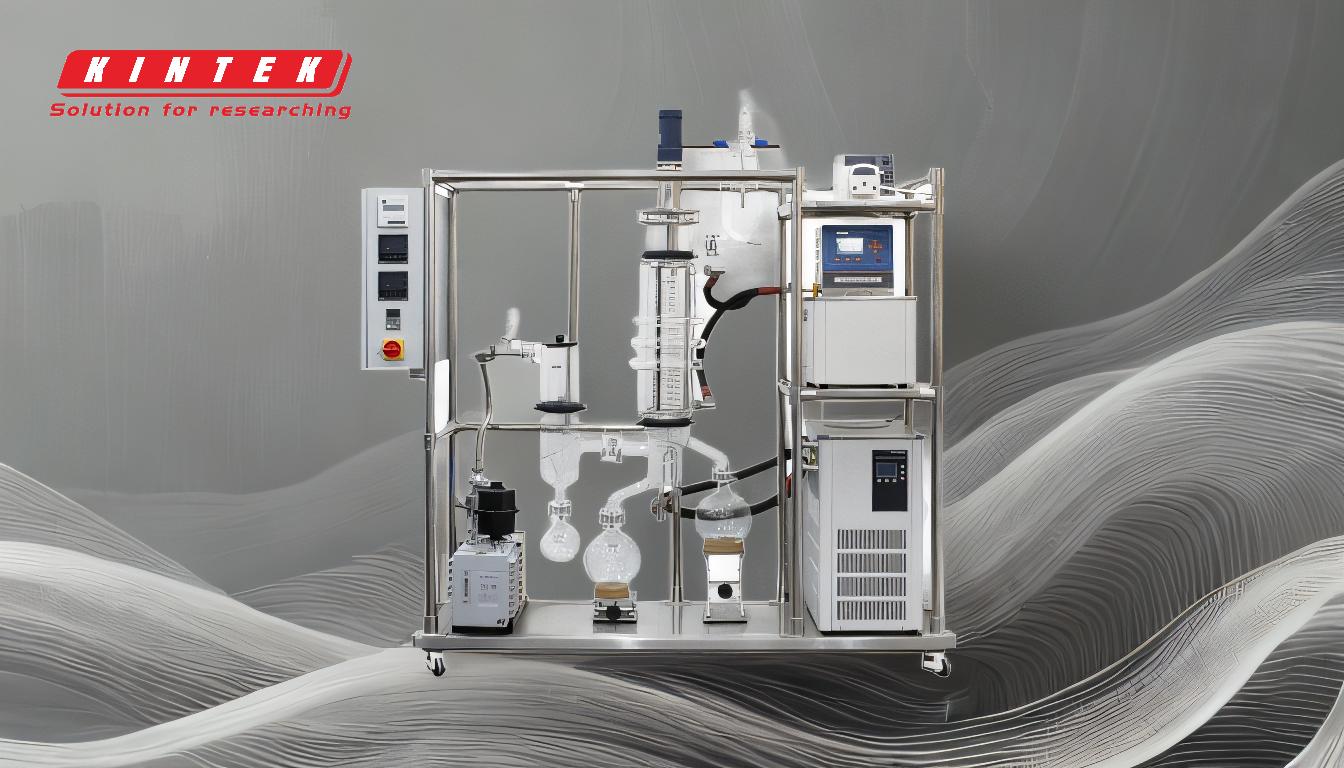Vacuum distillation is a specialized distillation technique used to separate and purify liquids with high boiling points or those that are sensitive to high temperatures. By reducing the pressure inside the distillation apparatus, the boiling points of the components are lowered, allowing them to evaporate at much lower temperatures than their normal boiling points. This process prevents thermal degradation of temperature-sensitive compounds and enables the separation of high-boiling-point liquids without exposing them to excessive heat. The vaporized components are then condensed and collected as high-purity distillates. Vacuum distillation is particularly useful in industries such as petroleum refining, chemical manufacturing, and pharmaceuticals, where precise separation and purity are critical.
Key Points Explained:

-
Principle of Vacuum Distillation:
- Vacuum distillation operates under reduced pressure, which lowers the boiling points of liquids. This is based on the principle that the boiling point of a liquid decreases as the surrounding pressure decreases. For example, a compound that normally boils at 300°C at atmospheric pressure might boil at 200°C under vacuum. This allows for the separation of high-boiling-point compounds without exposing them to high temperatures that could cause decomposition or degradation.
-
Process Overview:
- The process begins by placing the liquid mixture in a distillation flask and reducing the pressure inside the system using a vacuum pump. As the pressure drops, the components of the mixture begin to vaporize at lower temperatures. The vapors are then directed through a condenser, where they are cooled and reliquefied. The condensed liquid, or distillate, is collected in a separate container. This process is repeated for each component of the mixture, ensuring high-purity separation.
-
Applications of Vacuum Distillation:
- Vacuum distillation is widely used in industries where high-purity separation is required. For example:
- Petroleum Refining: To separate heavy crude oil fractions without thermal cracking.
- Chemical Manufacturing: To purify heat-sensitive chemicals or isolate high-boiling-point compounds.
- Pharmaceuticals: To produce high-purity active pharmaceutical ingredients (APIs) that degrade at high temperatures.
- Food and Fragrance Industry: To extract essential oils and flavors without altering their chemical composition.
- Vacuum distillation is widely used in industries where high-purity separation is required. For example:
-
Advantages of Vacuum Distillation:
- Lower Operating Temperatures: By reducing the pressure, vacuum distillation allows for the separation of compounds at temperatures far below their normal boiling points, minimizing the risk of thermal degradation.
- Energy Efficiency: Lower temperatures reduce energy consumption compared to atmospheric distillation, where higher temperatures are required.
- High Purity: The process yields high-purity distillates, making it ideal for applications requiring precise separation.
- Versatility: It can be combined with other distillation techniques, such as fractional or steam distillation, to enhance separation efficiency.
-
Key Components of a Vacuum Distillation System:
- Distillation Flask: Holds the liquid mixture to be distilled.
- Vacuum Pump: Reduces the pressure inside the system to create a vacuum.
- Condenser: Cools the vaporized components, converting them back into liquid form.
- Collection Flask: Collects the purified distillate.
- Pressure Gauge: Monitors the pressure inside the system to ensure optimal conditions.
- Heating Source: Provides controlled heat to the distillation flask, ensuring gradual vaporization.
-
Challenges and Considerations:
- Equipment Complexity: Vacuum distillation systems are more complex and expensive than standard distillation setups due to the need for vacuum pumps, pressure gauges, and airtight seals.
- Safety Concerns: Operating under reduced pressure requires careful monitoring to prevent leaks or pressure fluctuations that could compromise the process.
- Material Selection: The system must be constructed from materials that can withstand vacuum conditions and resist corrosion from the chemicals being distilled.
- Process Optimization: Achieving the desired separation efficiency requires precise control of pressure, temperature, and flow rates.
-
Comparison with Atmospheric Distillation:
- Temperature Requirements: Atmospheric distillation requires higher temperatures to achieve boiling, while vacuum distillation operates at lower temperatures.
- Energy Consumption: Vacuum distillation is generally more energy-efficient due to lower operating temperatures.
- Suitability: Atmospheric distillation is suitable for compounds with lower boiling points, whereas vacuum distillation is ideal for high-boiling-point or heat-sensitive compounds.
-
Future Trends and Innovations:
- Automation: Advances in automation and control systems are making vacuum distillation more efficient and reliable by enabling real-time monitoring and adjustment of process parameters.
- Green Chemistry: Vacuum distillation is being integrated into sustainable manufacturing processes to reduce energy consumption and minimize environmental impact.
- Hybrid Techniques: Combining vacuum distillation with other separation methods, such as membrane filtration or chromatography, is expanding its applications in complex separations.
By understanding the principles, process, and applications of vacuum distillation, equipment and consumable purchasers can make informed decisions about selecting the right systems and components for their specific needs. This knowledge also helps in optimizing processes to achieve high-purity separations while minimizing costs and energy consumption.
Summary Table:
| Aspect | Details |
|---|---|
| Principle | Reduces pressure to lower boiling points, enabling low-temperature separation. |
| Applications | Petroleum refining, chemical manufacturing, pharmaceuticals, food & fragrance. |
| Advantages | Lower operating temperatures, energy efficiency, high purity, versatility. |
| Key Components | Distillation flask, vacuum pump, condenser, collection flask, pressure gauge. |
| Challenges | Equipment complexity, safety concerns, material selection, process optimization. |
| Comparison | Lower temperatures and energy consumption vs. atmospheric distillation. |
Discover the right vacuum distillation system for your needs—contact our experts today!











